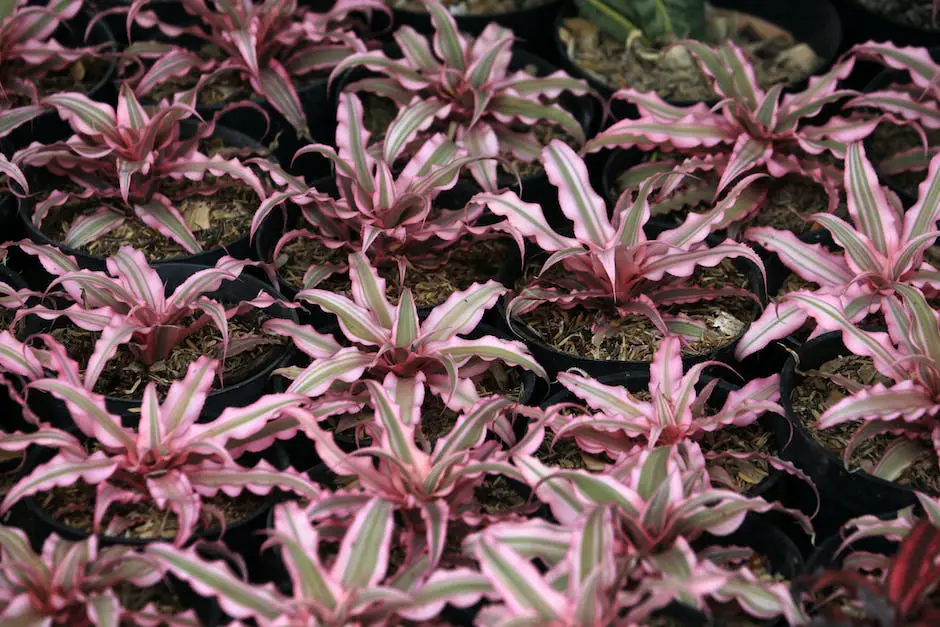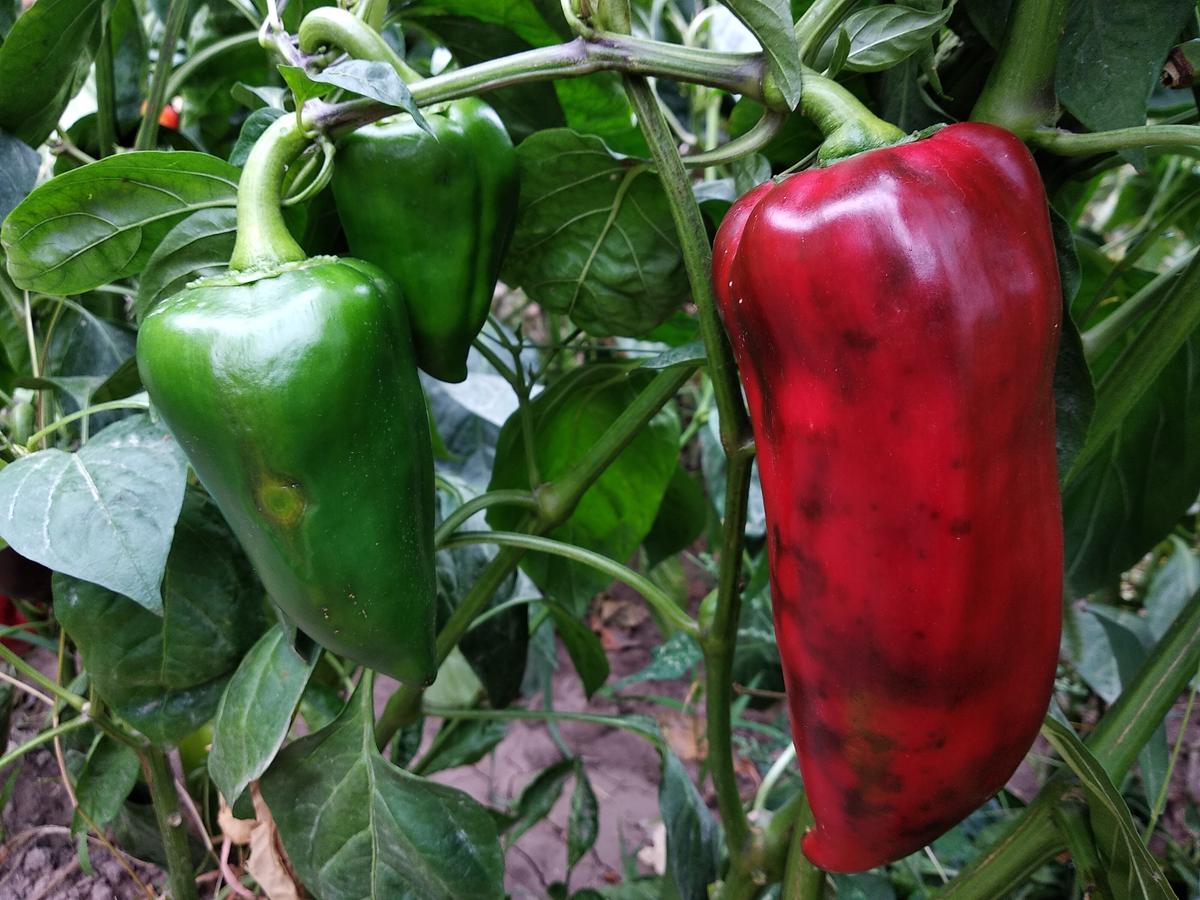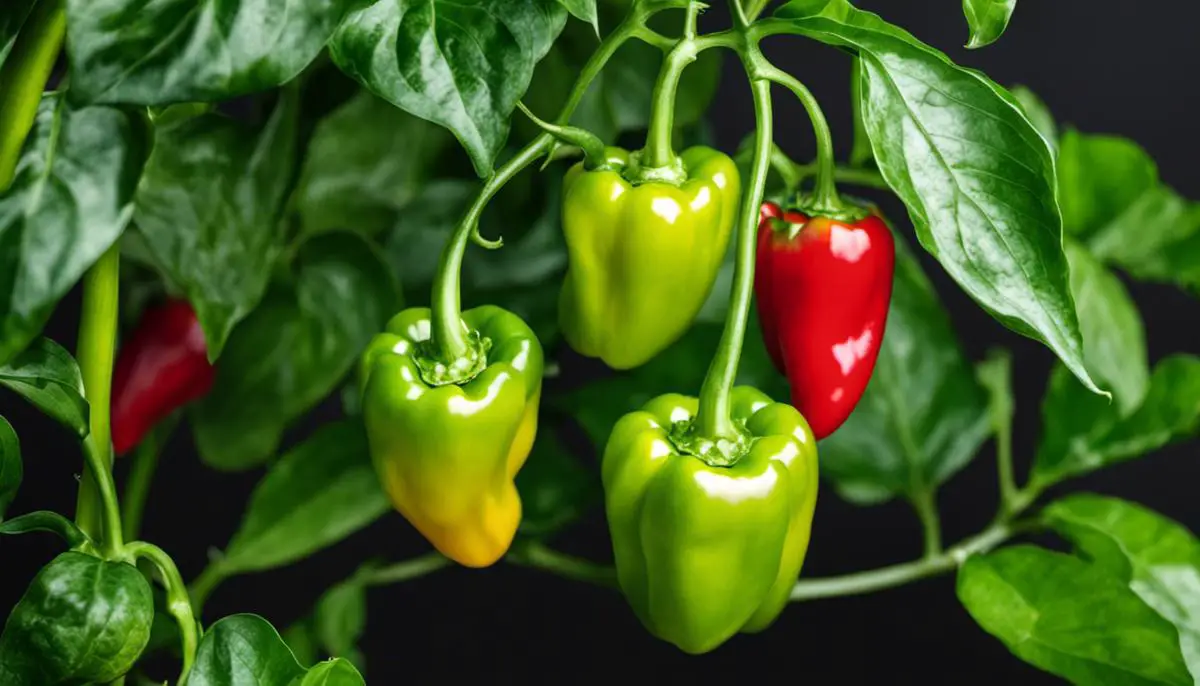In the realm of gardening and plant cultivation, providing plants with proper nutrients is indisputable for their growth and sustained health. One important mineral that often gets overlooked, yet plays a crucial role in the growth of pepper plants, is calcium. Though pivotal in the development of robust plant cell structure and promoting healthy growth, a deficiency of this nutrient can trigger multiple problems, presenting symptoms like stunted growth, leaf curling, and the infamous blossom end rot. Through our exploration of calcium deficiency in pepper plants, we hope to equip you with the necessary information about its indicators, causes, prevention, and treatment measures, thereby enabling you to confidently tackle any such issue in your garden.
Understanding Calcium Deficiency
Role of Calcium in Pepper Plant Health
Calcium plays a key role in the growth and development of pepper plants. It is fundamental for cell wall structure, promoting firmness in tissues and also aids in nutrient uptake. Its role extends beyond, aiding in enzymatic processes and nitrogen fixation, strengthening the plant’s natural defense against diseases and pests.
Reader Poll: What online courses would interest you?
Identifying Calcium Deficiency in Pepper Plants
One of the common signs of calcium deficiency in pepper plants is the curling of leaves, a condition known as leaf curl. This is typically characterized by the edges of the leaves curling inward and taking on a puckered appearance. In severe cases, the leaf margins may develop necrosis, turning brown or black.
Other symptoms like stunted growth might suggest calcium deficiency. Pepper plants’ growth does not progress as it should, as calcium is integral to the normal cell division and growth.
Blossom End Rot in Pepper Plants from Calcium Deficiency
Blossom end rot is probably the most notorious symptom of calcium deficiency in plants, including peppers. This condition is identified by a dark, sunken, and leathery appearance on the blossom end of the fruit (opposite the stem). The affected fruit often ripens prematurely and may drop off the plant.
Subscribe to our newsletter!
Role of Environmental Factors in Calcium Deficiency
Factors such as watering inconsistencies, high humidity, over-fertilization, and soil pH imbalances can also contribute to calcium deficiency in pepper plants. Too much water or too little can interfere with a plant’s ability to take up calcium from the soil. In high humidity environments, plants may transpire less, reducing the movement of calcium within the plant. Over-fertilization, especially with nitrogen, can create competition for calcium uptake. Additionally, acidic or alkaline soils can reduce the availability of calcium in the soil.
Management Strategies for Calcium Deficiency
Supplementation and corrective measures are crucial in managing calcium deficiency. Applying a calcium-rich fertilizer or lime to the soil can aid in reintroducing necessary calcium. Regular soil testing can assist in keeping pH and other nutrient levels balanced. Moreover, consistent watering practices, and perhaps the use of mulch, can help preserve soil moisture and prevent fluctuations that disrupt calcium uptake.
It’s also crucial to practice crop rotation and avoid planting peppers in the same soil each year, as this can deplete certain nutrients over time. In severe cases, foliar sprays containing calcium can be applied directly to the plant to rectify the imbalance.
Understanding the Effects of Calcium Deficiency
When pepper crops are calcium deficient, the quality and yield can be seriously compromised. This deficiency is normally exhibited through symptoms like curling leaves, inhibited growth, and a condition known as ‘end rot’. Such symptoms hinder the plant’s photosynthetic process, subsequently affecting fruit-bearing. The repercussions of this can lead to lower yields and, in some cases, fruits that are either inedible or unfit for sale. This can be particularly damaging for those farms which rely predominantly on pepper plants for their livelihood.

Causes of Calcium Deficiency in Pepper Plants
Identifying Calcium Deficiency in Pepper Plants
Recognizing calcium deficiency in pepper plants can be relatively simple when you know what to look for. Telltale signs include leaf tips that start to curl, growth becoming stunted, bloom end rot setting in, and a noticeable decline in fruit and vegetative growth. These factors indicate the plant is not receiving enough calcium and, if not addressed, can severely impact the overall health and productivity of the pepper plant.
Low Soil pH
One of the significant causes of calcium deficiency in pepper plants is low soil pH. When the pH level of the soil leans towards acidity, it restrains the plant’s ability to absorb calcium from the surrounding soil. The ideal pH level for pepper plant growth and calcium absorption is generally between 6.0 and 7.0. If the pH level dips below this range, it could lead to calcium deficiency in the plants.
Watering Practices and Calcium Deficiency
Water plays an essential role in nutrient absorption and transportation in plants, particularly Calcium. Inadequate or excessive watering can create an imbalance, contributing to a calcium deficiency. When pepper plants are underwatered, they may not absorb adequate calcium due to reduced soil moisture. On the contrary, overwatering can cause leaching of calcium and other nutrients, leading to their deficiency.
Effects of Nutrient Imbalances
Apart from soil pH and watering practices, an imbalance in the level of other nutrients in the soil, such as magnesium and potassium, can negatively impact calcium absorption. High levels of these nutrients can compete with the calcium ions and limit the amount of the latter that the plant can uptake.
Soil Temperature and Root Health
A critical aspect of soil health correlating with calcium deficiency is soil temperature. Cold soil impedes plants’ ability to absorb soil nutrients, including calcium. This effect is exacerbated when combined with overwatering, which tends to lower soil temperature.
Moreover, a plant with weak or damaged roots is less likely to absorb calcium efficiently. Root injury caused by pests or disease can severely impact the pepper plant’s ability to uptake calcium from the soil.
Mitigating Calcium Deficiency in Pepper Plants
In the quest to mitigate calcium deficiency in pepper plants, maintaining a balanced pH level in the soil is key. This balance can often be achieved by adding lime or gypsum to the soil. Regular watering and the preservation of optimal soil moisture are equally significant. Sometimes pepper plants require an additional boost, and in such cases, a calcium-rich fertilizer is recommended. For the early detection and quick resolution of nutrient imbalances, habitual soil testing proves to be a beneficial practice.
Moreover, factors such as soil temperature and root protection shouldn’t be overlooked as they significantly impact the plant’s capacity for calcium uptake. The ultimate goal is to cultivate a healthy soil environment for your pepper plants. Devoting time and effort in optimizing these soil conditions will invariably result in robust, calcium-rich pepper plants.

Preventing Calcium Deficiency
Understanding Calcium Deficiency in Pepper Plants
Becoming aware of the implications of calcium deficiency in pepper plants is also essential for their successful cultivation. A calcium deficiency can manifest in various problematic forms, from leaf tip burns to stunted plant growth and a condition called blossom end rot in the fruit. However, it is important to understand that a calcium deficiency isn’t always the result of a lack of calcium in the soil. Other factors could inhibit the plant’s ability to absorb the mineral. Thus, calcium deficiency can occur even when enough calcium is present in the soil, if the plant is unable to absorb it as needed.
The Importance of Soil Testing in Prevention
To effectively prevent calcium deficiency in pepper plants, the first step is to test the soil. A soil test provides key insights into the concentration of available nutrients, including calcium, in the soil. It can guide gardeners and growers to make informed decisions regarding soil amelioration, allowing targeted and efficient nutrient addition based on the test results.
Maintaining Balanced Soil pH Levels
Increasing the availability of calcium to the plants hinges on maintaining balanced soil pH levels. The ideal soil pH for pepper plants is around 6.5. When soil pH is too high (alkaline) or too low (acidic), pepper plants struggle to absorb nutrients efficiently, including calcium. Hence, regularly testing and adjusting soil pH ensures suitable conditions for optimal nutrient uptake.
The Role of Consistent Watering in Ensuring Calcium Uptake
Water plays a crucial role in the transportation of calcium throughout the pepper plant. Irregular or insufficient watering can disrupt this process, leading to calcium deficiency. Therefore, consistent watering is key. The use of mulch around the base of the plant helps to retain soil moisture, promoting steady water uptake and boosting the plant’s calcium absorption.
Leveraging Calcium-Rich Fertilizers and Amendments
Calcium-rich fertilizers and calcium-containing amendments like lime or gypsum can be greatly beneficial in preventing calcium deficiency in pepper plants. The selection among these will depend on the soil pH levels: lime is best used if soil pH adjustment is necessary whereas gypsum can contribute calcium without altering soil pH. Moreover, foliar sprays, which are directly applied to the plant leaves, can provide immediate relief for plants showing symptoms of deficiency, though they aren’t a long-term solution compared to soil amendments.
Navigating Proper Nutrient Balance for Healthy Pepper Plants
Pepper plants, akin to all other plants and living organisms, thrive best with a well-rounded nutritional intake, and calcium is a key player among these nutrients. It’s important to highlight, however, that while calcium is crucial, focusing too heavily on it while ignoring other nutrients such as magnesium, potassium, and phosphorus, could inadvertently induce deficiencies of these others. Therefore, it’s paramount that a balanced fertilization practice, providing all the necessary macro and micronutrients, be applied to ensure that pepper plants do not develop deficiencies, including those related to calcium.

Treating Calcium Deficiency
Recognizing and Addressing Calcium Deficiency in Pepper Plants
Within the structure and functionality of the pepper plant, calcium holds a pivotal role. It helps in the formation of cell walls, fortifying plant structure, and it acts as a messager within plant cells. When pepper plants are deficient in calcium, the symptoms manifest as distorted growth, discolored leaves or fruits, and it might also lead to a reduced overall yield.
Common signs of calcium deficiency in pepper plants include stunted growth, discoloration of leaves or fruits through brown or black spots and leaf deformation where they curl or cup. Another noticeable symptom is the blossom end rot of fruit which manifests as a decaying spot at the opposite end of the fruit’s stem.
There are several factors which could instigate a calcium deficiency in your pepper plants. It may be that the soil pH is either too high or too low, which hampers plants’ ability to absorb calcium. Alternatively, it could be that an imbalance in other nutrients like potassium or magnesium is impacting calcium uptake. Another common culprit is inconsistent watering, which disrupts the steady absorption of calcium by plant roots.
Mitigating Calcium Deficiency: Fertilizers and Treatments
To mitigate calcium deficiency in pepper plants, gardeners can resort to different fertilizers and treatments that rich in calcium. Calcium nitrate is commonly used as it provides both calcium and nitrogen. Lime or gypsum can be added to the soil before planting, or during growth. These substances correct the pH balance and facilitate calcium absorption.
In addition to inorganic fertilizers, there are organic methods available, such as bone meal or eggshells, which have a high calcium content. However, these methods take much longer for the plants to absorb the needed calcium compared to inorganic options.
Foliar sprays, which you apply directly on the leaves, can be effective in treatment. However, these are generally considered a quick fix and do not address the root cause of the deficiency in the soil.
Watering and Lightening Practices
Contrary to popular belief, watering and light affect the uptake of calcium. Pepper plants have a shallow root system, making them susceptible to dry conditions. These plants require consistent watering, but overwatering can lead to other problems like root rot, so always aim for moist, not drenched, soil.
Additionally, supplementing light can encourage more robust plant growth, indirectly aiding calcium absorption. For indoor plants, using grow lights can provide the necessary light coverage, strengthening plant structure and enhancing nutrient uptake, including calcium.
Comprehensive Intervention for Calcium Deficiency
While addressing the symptoms of calcium deficiency with fertilizers, treatments, and solid routines can restore your pepper plants’ health, understanding the cause behind the deficiency is crucial. Implement periodic soil testing to evaluate nutrient levels and make adjustments accordingly. Creating a balanced ecosystem for your plants is key: maintain ideal pH, manage nutrient balances, and optimize watering and light practices for the healthy growth of your pepper plants.
Combating calcium deficiency in pepper plants may take time but understanding the signs and taking prompt action can significantly improve the yield and quality of your peppers.

Photo by kellysikkema on Unsplash
Ultimately, the path to a successful pepper harvest involves a comprehensive understanding of the role and importance of calcium. Armed with insights about its key functions and the potential complications caused by its deficiency, growers can make informed decisions about the maintenance and care of their pepper plants. Delving into the causes of calcium deficiency, we’ve recognized the importance of balanced soil pH, adequate watering, and proper nutrient management. By taking steps to prevent deficiency and swiftly addressing it where it occurs, gardeners can propel their pepper plants toward a vibrant, hearty life, invariably ensuring an abundant yield of scrumptious peppers. Remember, the key to plant health isn’t a grand secret but rather is rooted in attention to detail, consistent nurturing, and informed care.

